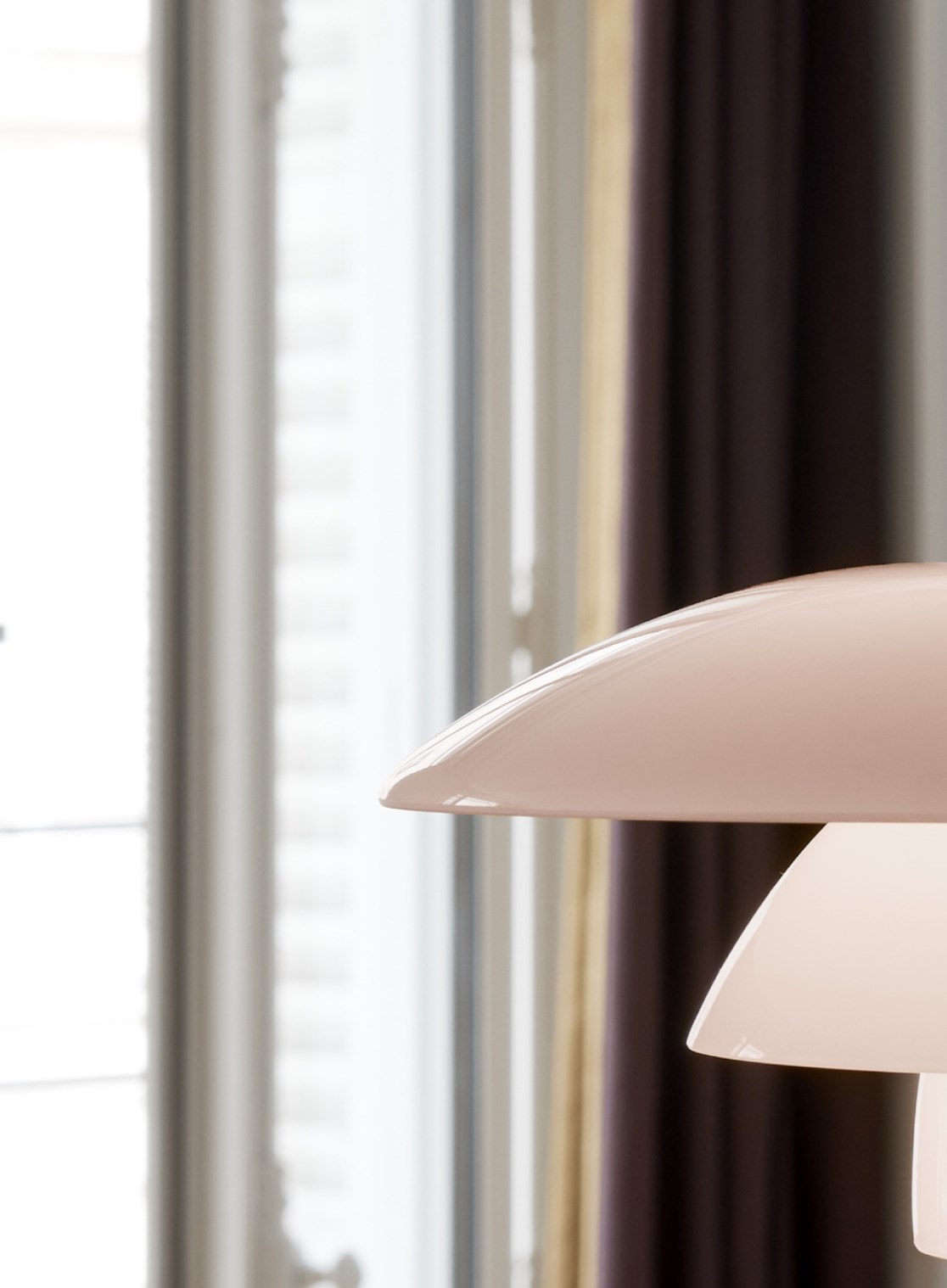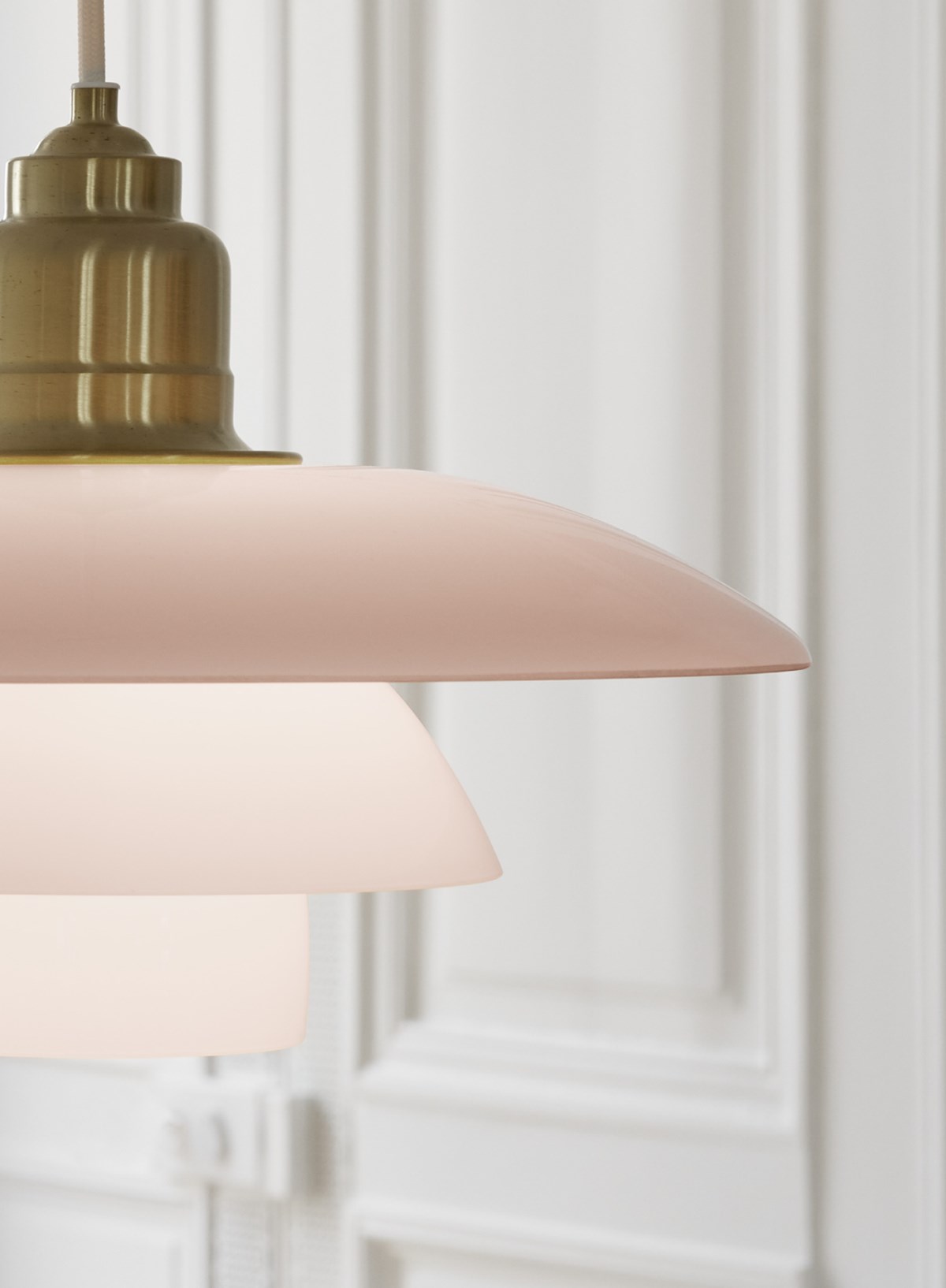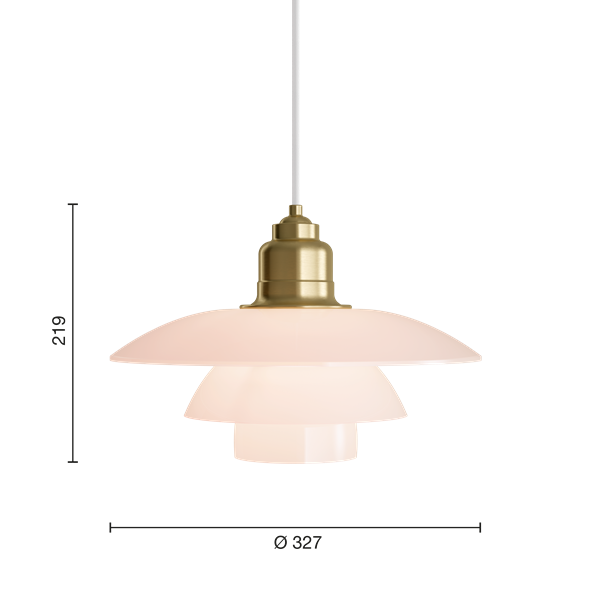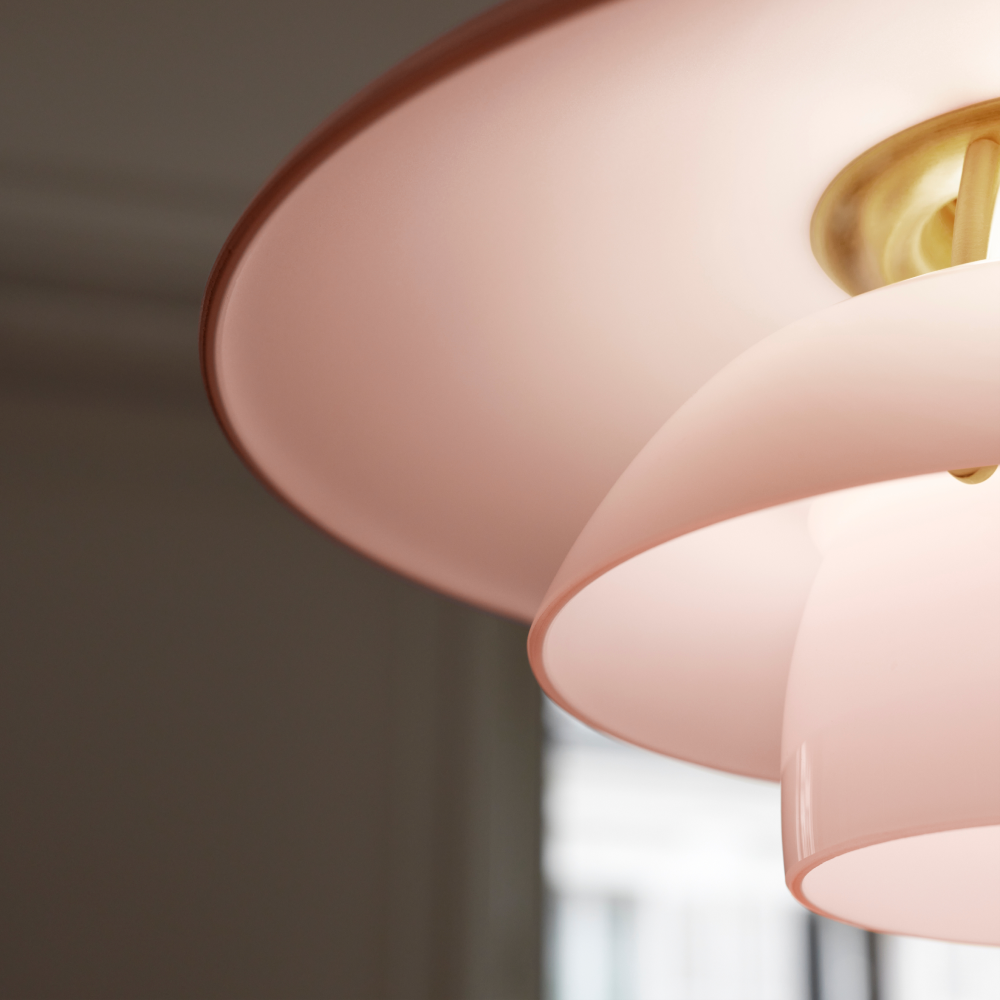The System PH was developed to provide efficient, more pleasant and completely glare-free lighting in people’s homes, when electric light began to replace candle chandeliers and kerosene lamps in the late 1920s. Even so, it was commerce and public administration that first took a liking to the highly functional and ultramodern looking PH lamp. Instead, the preferred lamp above the dinner table in most homes remained the chandelier, now electric and equipped with silken shades. Poul Henningsen wanted to show people that with his reflective three-shade system, they could have the cosy atmosphere they were familiar with from the glow of the kerosene lamp, without having to compromise on the quality of lighting. Many, on the other hand, longed for a warmer and more comfortable light than the light bulbs could provide at the time. The silk however softened the light and created ambience, but at the expense of the light quality. Henningsen and Louis Poulsen saw this as an opportunity to reach out to private customers once more. Around 1930, Louis Poulsen launched a new and extensive series of PH lamps. They were developed particularly for domestic use, which meant that many came in smaller sizes that could fit in anywhere and which also made them less expensive than the classic PH lamps at the time. To provide people with more warmth and individuality in the home, all of the new lamps were available in amber, red and yellow glass, besides the usual opal white, matt or metal shade variants. The series was a huge success. The PH 3½-3 Pale Rose Brass Pendant aligns well with nowadays, where discreet but clear lighting with a cosy ambience is often preferred. Henningsen also had a soft spot for the pale rose tint and how it could diversify the appearance of a lamp and its light. At around the same time, he created a particularly delicate variant of his seven-shade glass crown Septima, named the Rosa Septima. Three decades later, he used the same faint rosy hue on the inner sides of the beautiful copper shades of the iconic PH Artichoke. Today, the dimensions of the PH 3½-3 Pale Rose Brass Pendant gives it an almost universal fit, which makes it very versatile and suitable for almost any spot in need of a stylish touch together with an even distribution of very fine light. The soft curves and unique silhouette of the three-shade lamp combined with the pale rose colour, the clear edges and a white textile cord make the lamp stand out. While very distinctive looking on its own, it is even more impressive when in a row, even when unlit, where the glossy surface of the delicate mouth-blown Italian glass mirrors its surroundings. Just like in around 1930, the pendant comes with a beautiful brass suspension that will patinate over time, giving the pendant further character. To maintain the original brass finish, however, it may be polished carefully from time to time.































